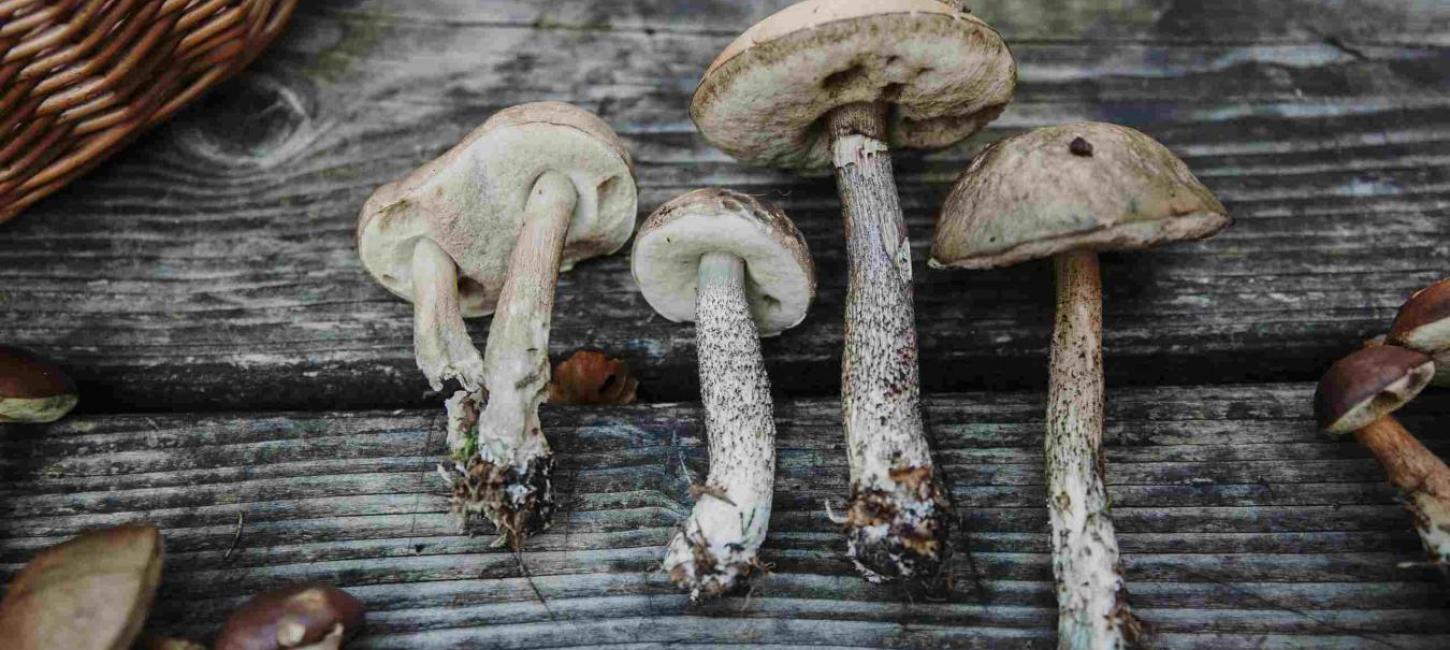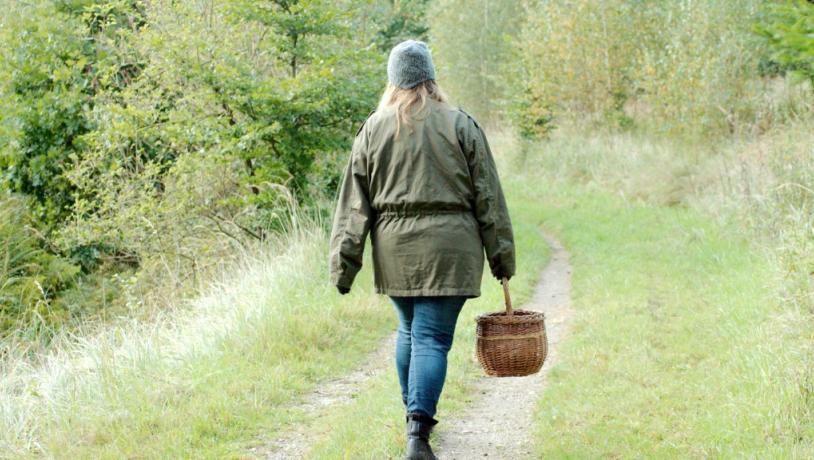
In Search of Mushrooms in North Zealand
The forests in North Zealand are a rooftop self-catering table with the most delicious edible mushrooms, and right now they are bubbling up in the forest floor. Take a guided mushroom tour or go hunting yourself. Sign up for a fall mushroom trip, and get tips on what to look out for.


6 Tips for your mushroom hunt
1. Stick to tube caps
"Most mushrooms are edible, but that does not mean they taste good. Throw them away if they taste bitter and sharp, and stick to tube caps. Then a stomach poisoning is the worst that can happen," says biologist Bent Otto Poulsen, with excellent knowledge of the strange growths in the forest floor.
Pipe caps can be easily identified on the underside of the cap, which has a dense layer of fine tubes. An excellent place to head is near old beech trees.
2. The chanterelle is a good beginner mushroom
The popular chanterelle is also a good beginner mushroom because it is easy to recognise. It has an apricot-like smell and a slightly sharp taste, which disappears during cooking, according to Bent Otto Poulsen. The chanterelle grows in nutrient-poor soil and is always near foliage and conifers. On a mushroom trip, it is done kept several times, and all the mushrooms are reviewed, even the ones you absolutely must stay far away from.
Sign up for the fall mushroom trips
3. How can I find mushrooms as a beginner?
If there are absolutely no courses or experienced mushroom hunters who can take you on a trip, we can suggest that you acquire books and read thoroughly about one to three mushrooms and learn to recognise them entirely before you start collecting mushrooms.
You can also use the app and the website WILD FOOD to get inspiration and tips for your next gathering.
4. What should I bring on the mushroom trip?
Before you go on a mushroom trip, it is a good idea to have the equipment in order. A good sponge kit consists of:
- Your common sense - do not eat anything you are not sure about.
- Mushroom basket - so that your mushrooms do not get mast or smashed on the trip. It would help if you preferably avoided plastic bags as the fungi are easily destroyed in them.
- Mushroom knife - a small sharp knife for cutting broken parts from and the bottom of the mushroom.
- Mushroom book - for determining fungal species and general advice on the mushroom trip.
Possibly:
- Brush - to remove soil from the fungi. It may be easier to keep them clean before putting them in your basket.
- A map or your phone - so you can map out the excellent mushroom sites for next year.
- By the way, remember sensible footwear so that you do not freeze on your feet, and clothes that suit the weather!

Photo:Sanketure
5. Where can I find mushrooms in North Zealand?
You can find mushrooms everywhere in North Zealand, but some of the significant good places are Gribskov, Tisvilde Hegn and Store Dyrehave. Gribskov is, however, especially mentioned as a good place as the different biotopes and the large size means that there are many places where the fungi can grow.
Attend gathering trips in the forests of North Zealand. Watch features about the journey from TV2 Lorry.
6. I'm in doubt about the fungus I found
Listen and preferably do not pick it up. Once you have picked it, you can use the Mushroom Atlas' guide to determine the fungus and whether it is edible. However, it is still a better idea to consult an expert.
On a mushroom trip in Tisvilde Hegn
The blogger @sarahinthegreen has been for a walk in Tisvilde Hegn looking for edible mushrooms. Read her guide to finding the perfect mushrooms in nature (in Danish).

